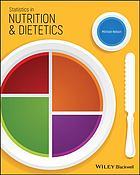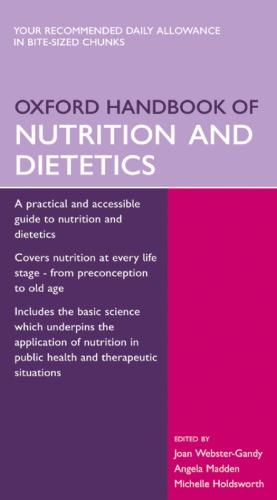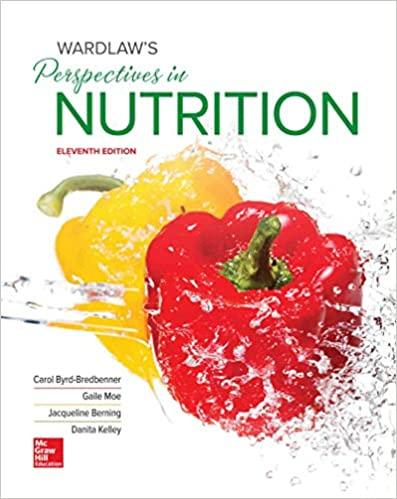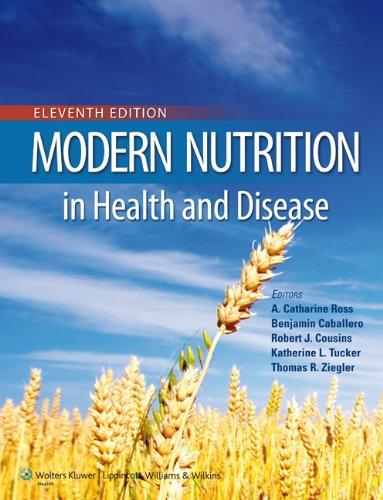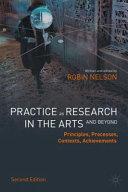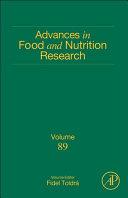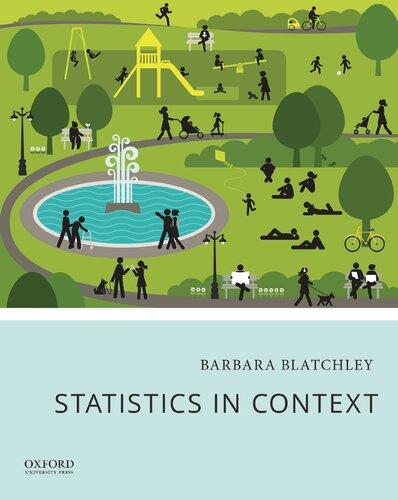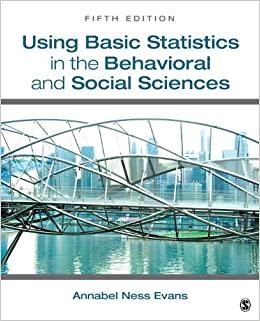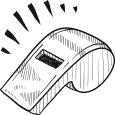About the Author
Dr. Michael Nelson is Emeritus Reader in Public Health Nutrition at King’s College London, and former Director of Research and Nutrition at the Children’s Food Trust. He is currently Director of Public Health Nutrition Research Ltd (http://www. phnresearch.org.uk/).
His early career with the Medical Research Council sparked a keen interest in nutritional epidemiology, statistics, and measurement validity. Research interests have included the diets of UK school children and links between diet and poverty, cognitive function, behaviour and attainment, and monitoring the impact of standards on school lunch take‐up and consumption. He collaborates nationally and internationally to promote a strong evidence base for school food policy. He has published over 200 peer‐reviewed articles and other publications in the public domain.
January 2020
Preface
WHY IS THIS BOOK NEEDED?
Worldwide, there is no basic statistics textbook that provides examples relevant to nutrition and dietetics. While it could be argued that general medical science statistics texts address the needs of nutrition and dietetics students, it is clear that students find it easier to take on board the concepts relating to statistical analysis and research if the examples are drawn from their own area of study. Many books also make basic assumptions about students’ backgrounds that may not always be appropriate, and use statistical jargon that can be very off‐putting for students who are coming to statistics for the first time.
WHO IS THIS BOOK FOR?
The book is aimed at undergraduate and postgraduate students studying nutrition and dietetics, as well as their tutors and lecturers. In addition, there are many researchers in nutrition and dietetics who apply basic statistical techniques in the analysis of their data, for whom a basic textbook provides useful guidance, and which helps to refresh their university learning in this area with examples relevant to their own field.
LEVEL AND PRE-REQUISITE
The level of the material is basic. It is based on a course that I taught at King’s College London over many years to nutrition and dietetics students, physiotherapists, nurses, and medical students. One of the aims was to take the fear and boredom out of
statistics. I did away with exams, and assessed understanding through practical exercises and coursework.
This book takes you only to the foothills of statistical analysis. A reasonable competence with arithmetic and a little algebra are required. For the application of more demanding and complex statistical techniques, the help of a statistician will be needed. Once you have mastered the material in this book, you may want to attempt a more advanced course on statistics.
AIMS AND SCOPE
The aim of this book is to provide clear, uncomplicated explanations and examples of statistical concepts and techniques for data analysis relevant to learning and research in nutrition and dietetics. There are lots of short, practical exercises to work through. These support insight into why various tests work. There are also examples of SPSS1 output for each test. This makes it is possible to marry up the outcomes computed manually with those produced by the computer. Examples are taken from around the globe relating to all aspects of nutrition, from biochemical experiments to public health nutrition, and from clinical and community practice
1SPSS stands for ‘Statistical Package for the Social Sciences’. It was developed at Stamford University in California, and the first manual was authored by Norman Nie, Dale Bent, and Hadlai Hull in 1970. The package was bought in 2009 by IBM. The worked examples and syntax in this book are based on Version 24 (2016). It has come a long way since its first incarnation, in terms of ease of use, error trapping, and output. Be grateful.
in dietetics. All of this is complemented by material online, including data sets ready for analysis, so that students can begin to understand how to generate and interpret SPSS output more clearly.
The book focuses on quantitative analysis. Qualitative analysis is highly valuable, but uses different approaches to data collection, analysis, and interpretation. There is an element of overlap, for example when quantitative statistical approaches are used to assess opinion data collected using questionnaires. But the two approaches have different underlying principles regarding data collection and analysis. They complement one another, but cannot replace one another.
Two things this book is not. First, it is not a ‘cookbook’ with formulas. Learning to plug numbers in to formulas by rote does not provide insight into why and how statistical tests work. Such books are good for reminding readers of the formulas which underlie the tests, but useless at conveying the necessary understanding to analyze data properly or read the scientific literature intelligently. Second, it is not a course in SPSS or Excel. While SPSS and Excel are used to provide examples of output (with some supporting syntax for clarity), it is no substitute for a proper course in computer‐based statistical analysis.
Scope
The book provides:
• a basic introduction to the scientific method
• an understanding of populations and samples, principles of measurement, and confidence intervals
• an understanding of the basic theory underlying basic statistical tests, including ‘parametric’ tests (those intended for use with data that follow mathematically defined distributions such as the so‐called ‘normal’ distribution); and ‘non‐parametric’ tests, for use with data distributions that are not parametric
• lots of worked examples and exercises that show how to compute the relevant outcome measures for each test, both by hand and using SPSS
• real examples from the nutrition and dietetics literature, including biochemical, clinical, and population‐based examples
• principles of research design, transformations, the relevance of sample size, and the concept and calculation of Power
All of the exercises have worked solutions.
Some students say, ‘Why do we have to do the exercises by hand when the computer can do the same computations in a fraction of a second?’ The answer is: computers are stupid. The old adage ‘garbage in, garbage out’ means that if you don’t have insight into why certain tests work the way they do, a computer will generate output that might be meaningless, but it won’t tell you that you’ve made a mistake, or ask ‘Is this really what you wanted to do?’ So, the purpose of the textbook and supporting learning materials is to help ensure that when you do use a computer, what goes in isn’t garbage, and what comes out is correct and provides meaningful answers to your research questions that you can interpret intelligently.
Finally, it is worth saying that some students will find this textbook providing welcome explanations about why things work the way they do. Others will find it annoyingly slow and detailed, with too much explanation for concepts and applications that seem readily apparent. If you are in the first group, I hope you enjoy the care with which explanations and examples are presented and that it helps to demystify what may at first seem a difficult topic. If you are in the second group, read quickly to get to the heart of the matter, and look for other references and resources for material that you feel is better suited to what you want to achieve. However hard or easy the text seems, students in both groups should seek to make friends with a local statistician or tutor experienced in statistical analysis and not try and do it alone.
Unique features
There are many unique features in this textbook and supporting material:
• Examples specific to nutrition and dietetics
• Clear simple language for students unfamiliar with statistical terms and approaches. For many students, the study of statistics is seen as either a burden or irrelevant to their decision to study nutrition and/or dietetics. But they will be required to pass a statistics module as part of their course. The aim is to make this as engaging and painless as possible.
• Lots of worked examples, with examples of SPSS output to help students with the interpretation of their analyses in the future.
• Putting statistics into context so that it is relevant to many undergraduate and postgraduate research projects.
• A website that provides complementary exercises, data sets, and learning and teaching tools and resources for both students and tutors.
CONTENTS
This textbook is based on over 20 years of teaching experience. There are four parts:
Part 1: Setting the statistical scene
This introduces concepts related to the scientific method and approaches to research; populations and samples; principles of measurement; probability and types of distribution of observations; and the notion of statistical testing.
Part 2: Statistical tests
This covers the basic statistical tests for data analysis. For each test, the underlying theory is explained,
and practical examples are worked through, complemented by interpretation of SPSS output.
Part 3: Doing research
Most undergraduate and postgraduate courses require students to collect data and/or interpret existing data sets. This section places the concepts in Part 1 and the learning in Part 2 into a framework to help you design studies, and determine sample size and the strength of a study to test your hypothesis (‘Power’). A Flow Chart helps you select the appropriate statistical test for a given study design.
The last chapter explores briefly how to present findings to different audiences – what you say to a group of parents in a school should differ in language and visual aids from a presentation to a conference of your peers.
Part 4: Solutions to exercises
It would be desperately unfair of me to set exercises at the end of each chapter and not provide the solutions. Sometimes the solutions are obvious. Other times, you will find a commentary about why the solution is what it is, and not something else.
ONLINE
No textbook is complete these days without online resources that students and tutors can access. For this textbook, the online elements include:
• Teaching tools
○ Teaching notes
○ PowerPoint slides for each chapter
○ SPSS data, syntax, and output files
• Learning resources:
○ Links to online software and websites that support learning about statistics and use of statistical software
TEACHING TOOLS
Teaching notes
For lecturers delivering courses based on the textbook, I have prepared brief teaching notes. These outline the approach taken to teach the concepts set out in the textbook. I used traditional lecturing coupled with in‐class work, practical exercises, homework, and research protocol development. My current practice is to avoid exams for any of this material. Exams and formal tests tend to distract students from revision of study materials more central to their course. Some students get completely tied up in knots about learning stats, and they fret about not passing the exam, ultimately to their academic disadvantage.
PowerPoint slide sets
The principal aid for tutors and lecturers is slide sets in PowerPoint. These save hours of preparation, provide consistent format of presentation, and build on approaches that have worked well with literally thousands of students that have taken these courses. When using the slides outside the context of teaching based on the text book, please ensure that you cite the source of the material.
SPSS data, syntax, and output files
A complete set of SPSS files for the examples and exercises in the text book is provided.
Learning resources
The page on Learning Resources includes website links and reviews of the strengths of a number of sites that I like and find especially helpful.
Unsurprisingly, there is a wealth of websites that support learning about statistics. Some focus on the basics. These are mainly notes from University courses that have been made available to students online. Some are good, some are not so good. Many go beyond the basics presented in this text book. Diligent searching by the student (or tutor) will no doubt unearth useful material. This will be equivalent to perusing the reading that I outline in the Introduction to Chapter 1.
Flow Charts are useful to find the statistical test that best fits the data. Appendix A10 in this book shows one. There are more online. Two that I like are described in more detail on the Learning Resources page. I have also included links to sites for determining Power and sample size.
Finally, guidance on the use of Excel and SPSS in statistics is very helpful. There are many sites that offer support, but my favourites are listed on the Learning Resources page.
The Scientific Method
Learning Objectives
After studying this chapter you should be able to:
• Describe the process called the scientific method: the way scientists plan, design, and carry out research
• Define diff erent types of logic, hypotheses, and research designs
• Know the principles of presenting data and reporting the results of scientific research
1.1 KNOWING THINGS
What can I know?
—Immanuel Kant, philosopher
The need to know things is essential to our being in the world. Without learning we die. At the very least, we must learn how to find food and keep ourselves
warm. Most people, of course, are interested in more than these basics, in developing lives which could be described as fulfilling. We endeavour to learn how to develop relationships, earn a livelihood, cope with illness, write poetry (most of it pretty terrible), and make sense of our existence. At the core of these endeavours is the belief that somewhere there is the ‘truth’ about how things ‘really’ are.
Much of the seeking after truth is based on feelings and intuition. We may ‘believe’ that all politicians are corrupt (based on one lot of evidence), and at the same time believe that people are inherently good (based on a different lot of evidence). Underlying these beliefs is a tacit conviction that there is truth in what we believe, even though all of our observations are not consistent. There are useful expressions like: ‘It is the exception that proves the rule’ to help us cope with observations that do not fit neatly into our belief systems. But fundamentally, we want to be able to ‘prove’ that what we believe is correct (i.e. true), and we busy ourselves collecting examples that support our point of view.
Some beliefs are easier to prove than others. Arguments rage about politics and religion, mainly because
Statistics in Nutrition and Dietetics, First Edition. Michael Nelson. © 2020 John Wiley & Sons Ltd. Published 2020 by John Wiley & Sons Ltd. Companion website: www.wiley.com/go/nelson/statistics
the evidence which is presented in favour of one position is often seen as biased and invalid by those who hold differing or opposing points of view. Some types of observations, however, are seen as more ‘objective’. In science, it is these so‐called objective measures, ostensibly free from bias, that are supposed to enable us to discover truths which will help us, in a systematic way, to make progress in improving our understanding of the world and how it works. This notion may be thought to apply not only to the physical and biological sciences but also the social sciences, and even disciplines such as economics. There are ‘laws’ which are meant to govern the ways in which things or people or economies behave or interact. These ‘laws’ are developed from careful observation of systems. They may even be derived from controlled experiments in which researchers try to hold constant the many factors which can vary from one setting to another, and allow only one or two factors to vary in ways which can be measured systematically.
It is clear, however, that most of the laws which are derived are soon superseded by other laws (or truths) which are meant to provide better understanding of the ways in which the world behaves. This process of old truths being supplanted by new truths is often a source of frustration to those who seek an absolute truth which is secure and immutable. It is also a source of frustration to those who believe that science provides us with objective facts, and who cannot therefore understand why one set of ‘facts’ is regularly replaced by another set of ‘facts’ which are somehow ‘more true’ than the last lot. It is possible, however, to view this process of continual replacement as a truth in itself: this law states that we are unlikely1 ever to find absolute truths or wholly objective observations, but we can work to refine our understanding and observations so that they more nearly approximate the truth (the world ‘as it is’). This assumes that there is in fact an underlying truth which (for
1As you can see, I am already beginning to hedge my bets. I am not saying that we will never find absolute truths or wholly objective observations. I am saying that it is unlikely. How unlikely is the basis for another discussion.
reasons which we will discuss shortly) we are unable to observe directly.2 Karl Popper puts it this way:
We can learn from our mistakes. The way in which knowledge progresses, and especially our scientific knowledge, is by unjustified (and unjustifiable) anticipations, by guesses, by tentative solutions to our problems, by conjectures. These conjectures are controlled by criticism; that is, by attempted refutations, which include severely critical tests. Criticism of our conjectures is of decisive importance: by bringing out our mistakes it makes us understand the difficulties of the problems which we are trying to solve. This is how we become better acquainted with our problem, and able to propose more mature solutions: the very refutation of a theory – that is, of any serious tentative solution to our problem – is always a step forward that takes us nearer to the truth. And this is how we can learn from our mistakes.
From ‘Conjectures and Refutations. The Growth of Scientific Knowledge’ [1].
This is a very compassionate view of human scientific endeavour. It recognizes that even the simplest of measurements is likely to be flawed, and that it is only as we refine and improve our ability to make measurements that we will be able to develop laws which more closely approximate the truth. It also emphasizes a notion which the atomic physicist Heisenberg formulated in his Uncertainty Principle. The Uncertainty Principle states in general terms that as we stop a process to measure it, we change its characteristics. This is allied to the other argument which
2My favourite description of the world is Proposition 1 from Wittgenstein’s Tractatus Logico‐Philosophicus: ‘The world is everything that is the case’. The Propositions get better and better. Have a look at: http://en.wikipedia.org/wiki/Tractatus_ Logico‐Philosophicus, or Wittgenstein for Beginners by John Heaton and Judy Groves (1994), Icon Books Ltd., if you want to get more serious.
states that the observer interacts with the measurement process. Heisenberg was talking in terms of subatomic particles, but the same problem applies when measuring diet, or blood pressure, or even more subjective things like pain or well‐being. Asking someone to reflect on how they feel, and the interaction between the person doing the measuring and the subject, has the potential to change the subject’s behaviour and responses. This is contrary to Newton’s idea that measurement, if carried out properly, could be entirely objective. It helps to explain why the discovery of the ‘truth’ is a process under continual refinement and not something which can be achieved ‘if only we could get the measurements right’.
Consider the question: ‘What do you understand if someone says that something has been proven “scientifically”?’ While we might like to apply to the demonstration of scientific proof words like ‘objective’, ‘valid’, ‘reliable’, ‘measured’, ‘true’, and so on, the common meanings of these words are very difficult to establish in relation to scientific investigation. For all practical purposes, it is impossible to ‘prove’ that something is ‘true’. This does not allow you to go out and rob a bank, for example. An inability on the part of the prosecution to establish the precise moment of the robbery, for instance, would not excuse your action in a court of law. We cope in the world by recognizing that there is a substantial amount of inexactitude, or ‘error’, in all that we do and consider. This does not mean we accept a shop‐keeper giving us the wrong change, or worry that a train timetable gives us information only to the nearest minute when the train might arrive before (or more commonly after) the advertised time. There are lots of ‘gross’ measurements that are good enough for us to plan our days without having to worry about the microdetail of all that we see and do.
For example, it is very difficult to describe an individual’s ‘usual’ intake of vitamin C, or to relate that person’s intake of vitamin C to risk of stroke. On the other hand, if we can accumulate sufficient evidence from many observations to show that increasing levels of usual vitamin C intake are associated with reduced risk of stroke (allowing for measurement error in assessing vitamin C intake
and the diagnosis of particular types of stroke), it helps us to understand that we can work with imprecise observations and laws which are not immutable. Moreover, it is important (for the sake of the growth of scientific knowledge) that any belief which we hold is formulated in a statement in such a way as to make it possible to test whether or not that statement is true. Statements which convey great certainty about the world but which cannot be tested will do nothing to improve our scientific understanding of the world. The purpose of this book, therefore, is to learn how to design studies which allow beliefs to be tested, and how to cope with the imprecision and variation inherent in all measurements when both collecting and analyzing data.
1.2 LOGIC
In science, we rely on logic to interpret our observations. Our aim is usually to draw a conclusion about the ‘truth’ according to how ‘strong’ we think our evidence is. The type of observations we choose to collect, and how we collect them, is the focus of research design: ‘How are we going to collect the information we need to test our belief?’ The decision about whether evidence is ‘strong’ or ‘weak’ is the province of statistics: ‘Is there good evidence that our ideas are correct?’ As Sherlock Holmes put it, ‘It is a capital mistake to theorise before one has data’.3
There are two types of logic commonly applied to experience.
1.2.1 Inductive Logic
The aim with inductive logic is to infer a general law from particular instances: arguing from the particular to the general. This type of logic is good for generating new ideas about what we think might be true. It is less good for testing ideas about what we think is true.
3Sherlock Holmes to Watson in: The Scandal in Bohemia
Examples of Research Designs that Depend on Inductive Logic
Case studies provide a single example of what is believed to be true. The example is so compelling by itself that it is used to infer that the particular instance described may be generally true. For example:
A dietitian treating a severely underweight teenage girl worked with a psychotherapist and the girl’s family to create an understanding of both the physiological and psychological basis and consequences of the disordered eating, resulting in a return to normal weight within six months. The approach contained unique elements not previously combined, and could be expected to have widespread benefit for similar patients.
A case study can be interesting and provide a powerful example. But it provides very limited evidence of the general truth of the observation.
Descriptive studies bring together evidence from a number of related observations that demonstrate repeatability in the evidence. For example:
In four old peoples’ homes, improved dining environments using baffles to reduce noise interference and allowing more time for staff to take orders and serve meals resulted in improved nutritional status among residents after one year.
This type of cross‐sectional evidence from numerous homes is better than evidence from a single home or a case study.
The generalizable conclusion, however, depends on a number of factors that might also need to be taken into account: what was the turnover among residents – did new residents have better nutritional status when they arrived, were they younger with better appetites, did they have better hearing so that they could understand more clearly what options were available on the menu for that day, etc.? One of the difficulties with descriptive studies is that we may not always be comparing like with like. We would have to collect information to demonstrate
that apart from differences in noise levels and serving times, there were no other differences which could account for the change in nutritional status. We would also want to know if the circumstances in the four selected care homes were generalizable to other care homes with a similar population of residents.
Experimental studies are designed to assess the effect of a particular influence (exposure) on a particular outcome. Other variables which might affect the outcome are assumed to be held constant (or as constant as possible) during the period of evaluation.
Establish if a liquid iron preparation is effective in treating anaemia.
If an influence produces consistent effects in a chosen group of subjects, we are tempted to conclude that the same influences would have similar effects in all subjects with similar characteristics. When we evaluated the results from our observations, we would try to ensure that other factors which might affect the outcome (age, sex, dietary iron intake, dietary inhibitors of iron absorption, etc.) were taken into account.
1.2.2
Deductive Logic
Deductive logic argues from the general to the particular. This type of logic involves a priori reasoning. This means that we think we know the outcome of our observations or experiment even before we start. What is true generally for the population4 will be true for each individual within the population. Here is a simple example:
All animals die. My dog is an animal. My dog will die.
4The term ‘population’ is defined in Chapter 2. It is not limited to the lay definition of all people living in a country. Instead, we can define our ‘population’. In the example above, we are talking about the population of all animals (from yeast to elephants). But we could equally well define a population as all women between 35 and 54 years of age living in London, or all GP surgeries in Liverpool. More to come in Chapter 2.
This type of logic is very powerful for testing to see if our ideas are ‘true’. The logic is: if ‘a’ is true, then ‘b’ will be the outcome. If the evidence is robust (i.e. as good a measure as we can get, given the limitations of our measuring instruments) and shows a clear relationship, it should stand up to criticism. And as we shall see, it provides the basis for the statistical inferences based on the tests described in later chapters.
There is a problem, however. The example above about my dog is relatively simple and straightforward. We can define and measure what we mean by an ‘animal’, and we can define and measure what we mean by ‘death’. But suppose we want to understand the impact of vitamin A supplementation on risk of morbidity and blindness from measles in children aged 1 to 5 years living in areas where vitamin A deficiency is endemic. Defining and measuring variables in complex biological systems is much harder (particularly in the field of nutrition and dietetics). It becomes harder to argue that what is true generally for the population will necessarily be true for each individual within the population. This is for two reasons. First, we cannot measure all the factors that link ‘a’ (vitamin A deficiency) and ‘b’ (morbidity and blindness from measles) with perfect accuracy. Second, individuals within a population will vary from one to the next in terms of their susceptibility to infection (for a wide range of reasons) and the consequent impact of vitamin A supplementation.
For deductive logic to operate, we have to assume that the group of subjects in whom we are conducting our study is representative of the population in which we are interested. (The group is usually referred to as a ‘sample’. Ideas about populations and samples are discussed in detail in Chapter 2.) If the group is representative, then we may reasonably assume that what is true in the population should be evident in the group we are studying. There are caveats to this around the size of the sample and the accuracy of our measurements, which will be covered in Chapters 2 and 12.
Examples of Research Designs that Depend on Deductive Logic
Intervention trials are designed to prove that phenomena which are true in the population are also true in a representative sample drawn from that population.
Compare the relative impact of two iron preparations in the treatment of anaemia.
This may sound similar to the statement that was made under ‘Experimental Studies’. The two statements are different, however. In the intervention trial, we would try to ensure that the two groups in which we were comparing treatments were similar to each other and similar to the population from which they were drawn. In the experimental study, we chose a group of subjects, measured the exposure and outcome and other characteristics of the group, and assumed that if the outcome was true in that group, it would be true in the population with similar characteristics. These differences in approach and logic are subtle but important.
In practice, the aim of most studies is to find evidence which is generalizable to the population (or a clearly defined subgroup). The relationship between the type of logic used and the generalizability of the findings is discussed below. The limitations of inductive logic and their resolution are discussed lucidly by Popper [1, pp. 54–55].
1.3 EXPERIMENTATION AND RESEARCH DESIGN
Here is a quote from ‘The Design of Experiments’ by Sir Ronald Fisher [2]:
Men5 have always been capable of some mental processes of the kind we call ‘learning by experience’. Doubtless this experience was
5I presume he means men and women. And children. Or ‘humans’. Use of the term ‘men’ was common to his time of writing. Don’t take offence. The point he is making is important.
often a very imperfect basis, and the reasoning processes used in interpreting it were very insecure; but there must have been in these processes a sort of embryology of knowledge, by which new knowledge was gradually produced.
Experimental observations are only experience carefully planned in advance, and designed to form a secure basis of new knowledge; that is, they are systematically related to the body of knowledge already acquired, and the results are deliberately observed, and put on record accurately.
Research usually has one of two main purposes: either to describe in as accurate and reliable a way as possible what one observes, or to test an idea about what one believes to be true. To undertake research, be it quantitative or qualitative, a systematic process of investigation is needed. This involves formulating clear ideas about the nature of the problem to be investigated, designing methods for collecting information, analyzing the data in an appropriate way, and interpreting the results.
1.3.1 A Children’s Story
One of my favourite children’s stories is The Phantom Tollbooth by Norton Juster [3], in which he brilliantly summarizes the purpose of research and statistics. This may seem unlikely, but read on.
The book tells the story of Milo, a young boy living in an apartment in New York. He is endlessly bored and someone for whom everything is a waste of time. He arrives home after school one day to find a large package sitting in the middle of the living room. (I don’t know where his parents are.) He unpacks and assembles a tollbooth (he lives in America, don’t forget), gets in his electric car, deposits his coin, and drives through the tollbooth into a land of fanciful characters and logical challenges.
The story is this. The princesses Rhyme and Reason have been banished, and it is his job to rescue
them and restore prosperity to the Kingdom of Wisdom. He drives from Dictionopolis (where only words are important) to Digitopolis (where – you guessed it – only numbers are important) to reach the Castle in the Air, where the princesses are held captive. He shares his journey with two companions: a Watchdog named Tock who is very vigilant about paying attention to everything (provided he keeps himself wound up); and the Humbug, ‘a large beetle‐like insect dressed in a lavish coat, striped trousers, checked waistcoat, spats and a derby hat’, whose favourite word is BALDERDASH – the great sceptic.
On the way to Digitopolis, the road divides into three, with an enormous sign pointing in all three directions stating clearly:
DIGITOPOLIS
5 miles
1 600 rods
8 800 Yards
26 400 ft
316 800 in
633 600 half inches
They argue about which road to take. The Humbug thinks miles are shorter, Milo thinks half‐inches are quicker, and Tock is convinced that whichever road they take it will make a difference. Suddenly, from behind the sign appears an odd creature, the Dodecahedron, with a different face for each emotion for, as he says, ‘here in Digitopolis everything is quite precise’. Milo asks the Dodecahedron if he can help them decide which road to take, and the Dodecahedron promptly sets them a hideous problem, the type that makes maths pupils have nightmares and makes grown men weep:
If a small car carrying three people at thirty miles an hour for ten minutes along a road five miles long at 11.35 in the morning starts at the same time as three people who have been travelling in a little automobile at twenty miles an hour for fifteen minutes on another
road and exactly twice as long as one half the distance of the other, while a dog, a bug, and a boy travel an equal distance in the same time or the same distance in an equal time along a third road in mid‐October, then which one arrives first and which is the best way to go?
They each struggle to solve the problem.
‘I’m not very good at problems’, admitted Milo.
‘What a shame’, sighed the Dodecahedron. ‘They’re so very useful. Why, did you know that if a beaver two feet long with a tail a foot and half long can build a dam twelve feet high and six feet wide in two days, all you would need to build the Kariba Dam is a beaver sixty‐eight feet long with a fifty‐one foot tail?’
‘Where would you find a beaver as big as that?’ grumbled the Humbug as his pencil snapped.
‘I’m sure I don’t know’, he replied, ‘but if you did, you’d certainly know what to do with him’.
‘That’s absurd’, objected Milo, whose head was spinning from all the numbers and questions.
‘That may be true’, he acknowledged, ‘but it’s completely accurate, and as long as the answer is right, who cares if the question is wrong? If you want sense, you’ll have to make it yourself’.
‘All three roads arrive at the same place at the same time’, interrupted Tock, who had patiently been doing the first problem.
‘Correct!’ shouted the Dodecahedron. ‘Now you can see how important problems are. If you hadn’t done this one properly, you might have gone the wrong way’.
‘But if all the roads arrive at the same place at the same time, then aren’t they all the right way?’ asked Milo.
‘Certainly not’, he shouted, glaring from his most upset face. ‘They’re all the wrong way. Just because you have a choice, it doesn’t mean that any of them has to be right’.
That is research design and statistics in a nutshell. Let me elaborate.
1.4 THE BASICS OF RESEARCH DESIGN
According to the Dodecahedron, the basic elements of research are as shown in Box 1.1: He may be a little confused, but trust me, all the elements are there.
1.4.1 Developing the Hypothesis
The Dodecahedron: ‘As long as the answer is right, who cares if the question is wrong?’
The Dodecahedron has clearly lost the plot here. Formulating the question correctly is the key starting point. If the question is wrong, no amount of experimentation or measuring will provide you with an answer.
The purpose of most research is to try and provide evidence in support of a general statement of what one believes to be true. The first step in this process is to establish a hypothesis. A hypothesis is a clear statement of what one believes to be true. The way in which the hypothesis is stated will also have an impact on which measurements are needed. The formulation of a clear hypothesis is the critical first step in the development of research. Even if we can’t make measurements that reflect the truth, the hypothesis should always be a statement of what
BOX 1.1
The four key elements of research
Hypothesis
Design
Statistics
Interpretation
you believe to be true. Coping with the difference between what the hypothesis says is true and what we can measure is at the heart of research design and statistics.
TIP
Your first attempts at formulating hypotheses may not be very good. Always discuss your ideas with fellow students or researchers, or your tutor, or your friendly neighbourhood statistician. Then be prepared to make changes until your hypothesis is a clear statement of what you believe to be true. It takes practice – and don’t think you should be able to do it on your own, or get it right first time. The best research is collaborative, and developing a clear hypothesis is a group activity.
We can test a hypothesis using both inductive and deductive logic. Inductive logic says that if we can demonstrate that something is true in a particular individual or group, we might argue that it is true generally in the population from which the individual or group was drawn. The evidence will always be relatively weak, however, and the truth of the hypothesis hard to test. Because we started with the individual or group, rather than the population, we are less certain that the person or group that we studied is representative of the population with similar characteristics. Generalizability remains an issue.
Deductive logic requires us to draw a sample from a defined population. It argues that if the sample in which we carry out our measurements can be shown to be representative of the population, then we can generalize our findings from our sample to the population as a whole. This is a much more powerful model for testing hypotheses.
As we shall see, these distinctions become important when we consider the generalizability of our findings and how we go about testing our hypothesis.
1.4.2 Developing the ‘Null’ Hypothesis
In thinking about how to establish the ‘truth’6 of a hypothesis, Ronald Fisher considered a series of statements:
No amount of experimentation can ‘prove’ an inexact hypothesis.
The first task is to get the question right! Formulating a hypothesis takes time. It needs to be a clear, concise statement of what we believe to be true,7 with no ambiguity. If our aim is to evaluate the effect of a new diet on reducing cholesterol levels in serum, we need to say specifically that the new diet will ‘lower’ cholesterol, not simply that it will ‘affect’ or ‘change’ it. If we are comparing growth in two groups of children living in different circumstances, we need to say in which group we think growth will be better, not simply that it will be ‘different’ between the two groups. The hypothesis that we formulate will determine what we choose to measure. If we take the time to discuss the formulation of our hypothesis with colleagues, we are more likely to develop a robust hypothesis and to choose the appropriate measurements. Failure to get the hypothesis right may result in the wrong measurements being taken, in which case all your efforts will be wasted. For example, if the hypothesis relates to the effect of diet on serum cholesterol, there may be a particular
6You will see that I keep putting the word ‘truth’ in single quotes. This is because although we want to test whether or not our hypothesis is true – it is, after all, a statement of what we believe to be true – we will never be able to collect measures that are wholly accurate. Hence, the truth is illusory, not an absolute. This is what the single quotes are intended to convey.
7‘The term “belief” is taken to cover our critical acceptance of scientific theories – a tentative acceptance combined with an eagerness to revise the theory if we succeed in designing a test which it cannot pass’ [1, p. 51]. It is important to get used to the idea that any ‘truth’ which we hope to observe is likely to be superseded by a more convincing ‘truth’ based on a more robust experiment or set of observations using better measuring instruments, and which takes into account some important details which we did not observe the first time.
cholesterol fraction that is altered. If this is stated clearly in the hypothesis, then we must measure the relevant cholesterol fraction in order to provide appropriate evidence to test the hypothesis.
No finite amount of experimentation can ‘prove’ an exact hypothesis.
Suppose that we carry out a series of four studies with different samples, and we find that in each case our hypothesis is ‘proven’ (our findings are consistent with our beliefs). But what do we do if in a fifth study we get a different result which does not support the hypothesis? Do we ignore the unusual finding? Do we say, ‘It is the exception that proves the rule?’ Do we abandon the hypothesis? What would we have done if the first study which was carried out appeared not to support our hypothesis? Would we have abandoned the hypothesis, when all the subsequent studies would have suggested that it was true?
There are no simple answers to these questions. We can conclude that any system that we use to evaluate a hypothesis must take into account the possibility that there may be times when our hypothesis appears to be false when in fact it is true (and conversely, that it may appear to be true when in fact it is false). These potentially contradictory results may arise because of sampling variations (every sample drawn from the population will be different from the next, and because of sampling variation, not every set of observations will necessarily support a true hypothesis), and because our measurements can never be 100% accurate.
A finite amount of experimentation can disprove an exact hypothesis.
It is easier to disprove something than prove it. If we can devise a hypothesis which is the negation of what we believe to be true (rather than its opposite), and then disprove it, we could reasonably conclude that our hypothesis was true (that what we observe, for the moment, seems to be consistent with what we believe).
This negation of the hypothesis is called the ‘null’ hypothesis. The ability to refute the null hypothesis
lies at the heart of our ability to develop knowledge. A good null hypothesis, therefore, is one which can be tested and refuted. If I can refute (disprove) my null hypothesis, then I will accept my hypothesis.
A theory which is not refutable by any conceivable event is non-scientific. Irrefutability is not a virtue of a theory (as people often think) but a vice. [1, p. 36]
Let us take an example. Suppose we want to know whether giving a mixture of three anti‐oxidant vitamins (β‐carotene, vitamin C, and vitamin E) will improve walking distance in patients with Peripheral Artery Disease (PAD), an atherosclerotic disease of the lower limbs. The hypothesis (which we denote by the symbol H1) would be:
H1: Giving anti‐oxidant vitamins A, C, and E as a dietary supplement will improve walking distance in patients with PAD.8
The null hypothesis (denoted by the symbol H0) would be:
H0: Giving anti‐oxidant vitamins A, C, and E as a dietary supplement will not improve walking distance in patients with PAD.
H0 is the negation of H1, suggesting that the vitamin supplements will make no difference. It is not the opposite, which would state that giving supplements reduces walking distance.
It is easier, in statistical terms, to set about disproving H0. If we can show that H0 is probably not true, there is a reasonable chance that our hypothesis is true. Box 1.2 summarizes the necessary steps. The statistical basis for taking this apparently convoluted approach will become apparent in Chapter 5.
8This is the hypothesis – short and sweet. The study protocol will specify which subjects we choose, the dosage of the supplement, how often it is administered over what period, how walking distance is measured in a standardized way, what we mean by ‘improve,’ whether we measure blood parameters to confirm compliance with the protocol, etc.
BOX 1.2
Testing the hypothesis
1. Formulate the Hypothesis (H1)
2. Formulate the Null Hypothesis (H0)
3. Try to disprove the Null Hypothesis
1.4.3 Hypothesis Generating Versus Hypothesis Testing
Some studies are observational rather than experimental in nature. The purpose of these studies is often to help in the generation of hypotheses by looking in the data for relationships between different subgroups and between variables. Once the relationships have been described, it may be necessary to set up a new study which is designed to test a specific hypothesis and to establish causal relationships between the variables relating to exposure and outcome. For example, Ancel Keys observed that there was a strong association between the average amount of saturated fat consumed in a country and the rate of death from coronary heart disease: the more saturated fat consumed, the higher the death rate. Numerous studies were carried out subsequently to test the hypothesis that saturated fat causes heart disease. Some repeated Ancel Keys’ original design comparing values between countries, but with better use of the available data, including more countries. Other studies compared changes in saturated fat consumption over time with changes in coronary heart disease mortality. Yet other studies looked at the relationship between saturated fat consumption and risk of heart disease in individuals. Not all of the studies came to the same conclusions or supported the hypothesis. It took some time to understand why that was the case.
1.4.4
Design
The Dodecahedron: ‘If you hadn’t done this one properly, you might have gone the wrong way’. When designing an experiment, you should do it in such a way that allows the null hypothesis to be
disproved. The key is to introduce and protect a random element in the design.
Consider some research options for the study to test whether anti‐oxidant vitamins supplements improve walking distance in peripheral arterial disease (PAD). In the sequence below, each of the designs has a weakness, which can be improved upon by introducing and protecting further elements of randomization.
a. Choose the first 100 patients with PAD coming into the clinic, give them the treatment, observe the outcome.
Patients may naturally improve with time, without any intervention at all. Alternatively, there may be a placebo effect (patients show improvement simply as a result of having taken part in the study because they believe they are taking something that is beneficial and alter their behaviour accordingly), even if the treatment itself is ineffective.
This is a weak observational study. Introduce a control group which receives a placebo.
b. Allocate the first 50 patients to the treatment group, the next 50 to the placebo group. If the two groups differ by age, sex, or disease severity, this could account for apparent differences in improvement between the groups.
This is a weak experimental study. Introduce matching.
c. Match patients in pairs for age, sex, disease severity; assign the first patient in each pair to receive treatment, the second patient to receive a placebo. The person assigning patients may have a subconscious preference for putting one patient first in each pair. Does the patient know which treatment they are getting?
This is a weak placebo‐controlled intervention trial. Introduce randomization and blinding.
d. Allocate patients to treatment or placebo randomly within pairs. Make sure that the
researcher does not know which patient is to receive which treatment (the researcher is then said to be ‘blind’ to the allocation of treatment). Make sure that the patient does not know which treatment they are receiving (keep the patient ‘blind’ as well). This makes the study ‘double blind’.
e. Conduct a placebo‐controlled randomized double‐blind intervention trial.
‘Randomization properly carried out is the key to success.’ (Sir Ronald Fisher)
Intervention studies of this type are often regarded as the most robust for testing a hypothesis. But sometimes randomized controlled trials are not ethical, especially if the exposure may be harmful (e.g. smoking, or increasing someone’s saturated fatty acid intake), or it is not possible to blind either the subjects or the researchers because the treatment being given is so obviously different from the placebo. In these cases, it is possible to mimic intervention studies in samples that are measured at baseline and then followed up over months or years. These types of studies raise issues about how to deal with factors that cannot be controlled for but which might affect the outcome (e.g. in a study looking at the impact of diet on risk of cardiovascular disease, the influence of smoking and diabetes) and changes in the general environment (e.g. indoor smoking bans) that have the potential to affect all the subjects in the study. Complex statistical analysis can be used to cope with some of these design issues. The ability to test the hypothesis in a robust way remains.
1.4.5 Statistics
The Dodecahedron: ‘Just because you have a choice, it doesn’t mean that any of them has to be right’. Statistical tests enable you to analyze data in order to decide whether or not it is sensible to accept your hypothesis. There are literally thousands of
values that can be calculated from hundreds of tests, but unless you know which test to choose, the values that you calculate may not be appropriate or meaningful. One of the main aims of this book is to help you learn to choose the test which is right for the given research problem. Once you have decided which test is appropriate for your data, the calculation is a straightforward manipulation of numbers. It is vitally important, however, to learn which data to use, how the manipulation is carried out, and how it relates to the theoretical basis which will enable you to make the decision about the truth of your hypothesis.
Most of the time it is better to use a computer to do the computation for you. Even if you enter the values correctly and generate a meaningful outcome, the computer will not tell you if your hypothesis is true. For that, you need to know how to interpret the results of the tests.
1.4.6 Interpretation
The Dodecahedron: ‘If you want sense, you’ll have to make it yourself’.
Every statistical test will produce a number (the test statistic) which you then need to interpret. This is the last stage and often the most difficult part of statistical analysis. The final emphasis in every chapter that deals with statistical tests will be on how to interpret the test statistic. We will also look at the SPSS output to verify that the right set of values has been entered for statistical analysis.
Two concepts deserve mention here: ‘Inference’ and ‘Acceptance’. ‘Inference’ implies greater or lesser strength of fact. It is usually expressed as a probability of a given result being observed. If there is a high probability that the result which you have observed is associated with the hypothesis being true, we talk about ‘strong’ evidence. If the observed outcome is little different from what we would expect to see if the null hypothesis were true, we talk about ‘weak’ or ‘no’ evidence.
At some point, we need to make a decision about whether to accept or reject the null hypothesis, that is, to make a statement about whether or not we
believe that the hypothesis is true. ‘Acceptance’ implies a cut‐off point upon which action will be taken. We will discuss cut‐off points in Chapter 5. It is important not to confuse political expediency (acceptance) with scientific validity (inference).
1.5 NEXT STEPS
Every year, at least one student shows up at my door, holds out an open notebook with a page full of numbers, and says, ‘I’ve collected all this data9 and now I don’t know what to do with it’. I strongly resist the temptation to tell them to go away, or to ask why they didn’t come to see me months ago. I usher them in and see what we can salvage. Usually, it is a debacle. The data collected are not suitable for testing the hypothesis; their sample is poorly defined; they don’t have enough of the right types of observations; they have used different methods for collecting data at baseline and follow‐up; the list goes on and on.
Box 1.3 summarizes the steps that should be undertaken when conducting research. Although Steps 1 and 2 are essential (‘Getting the question right’), probably the most important step is Step 3, the point at which you design the research project. It is vital at this stage that you consult a statistician (as well as others who have done similar research). Be prepared to accept that your hypothesis may need modifying, and that the design that you first thought of is not perfect and would benefit from improvements. It is very unlikely that you will have got it right at your first attempt. Be prepared to listen and to learn from your mistakes. As I said in the Introduction to this book, statisticians may be perceived as monstrous, inhuman creatures intent only on humiliating those who come to consult them. In reality, the statistician is there to advise you concerning the likelihood of being able to prove your hypothesis, guide you in the design of the study, the choice of measurements which you intend to make, and the
9The word ‘data’ is plural, by the way – she should have said ‘I have collected all these data’ – but we will come to that later.
type of analyses you plan to undertake. Months or years of effort can be wasted if you embark on a study which is flawed in its design. Do not take the chance! Be brave! Be thick‐skinned! Talk with statisticians and accept their advice. Even get a second opinion if you feel very uncertain about the advice you are given.
1.6 RESEARCH DESIGN
There is a wide variety of research designs which can be used to address the many research questions that you are likely to ask. There is no strictly right or wrong answer concerning which design to use. You should recognize, however, that some designs are stronger when it comes to arguing the truth of your hypothesis. The aim in carrying out any research will always be to obtain the maximum information from a given design in relation to a particular research question, given the time and financial resources that are available.
1.6.1 Project Aims
Coming up with an interesting and useful research question will always involve reading the relevant literature (both books and journals) to explore how other people have tackled similar problems, and discussing with colleagues how best to investigate the problem at hand. Once you have done that, you can think about what it is you want to achieve in your research.
Projects have different aims. An undergraduate student project with 15 subjects carried out part‐time over two months may not have much chance of establishing new findings that are statistically significant, but it will introduce the student to hypothesis formulation, designing a study, writing a research protocol, sampling, subject recruitment, data entry, computer analysis, and writing up the results. On the other hand, an MSc project carried out full‐time over four months will require the same skills as the undergraduate project, but will usually involve a more detailed
BOX 1.3
Steps in undertaking research
• Step 1. Make observations about the world. Science doesn’t happen in a vacuum.
• Step 2. Construct a Hypothesis. State clearly the aims and objectives of your study.
Formulate the Null Hypothesis.
• Step 3. Design the experiment.
This is the stage at which you should seek the advice of a statistician
regarding the hypothesis, sample selection, sample size, choice of measurements, and the type of analyses and statistical tests to be used. Failure to consult properly at this stage may mean that any work that you do may be a waste of time. Do not take that chance!
• Step 4. Conduct the research.
• Step 5. Analyze the data both observationally (do the numbers make sense?) and statistically.
• Step 6. Interpret the results (draw inferences) and write your report (for marking or for publication). Work that is not marked or published may just as well never have been completed.
• Step 7.Bask in the glory of a job well done.
consideration of design, sample size, and study power (see Chapter 12). It will also provide an opportunity to write a detailed report and to make a presentation of the findings (both for assessment), usually to an audience of postgraduate peers and their tutors. More demanding undergraduate projects may include some or all of these additional elements. For a PhD, or for funded research, all of these elements will be present, plus the requirement to write paper(s) for submission to a peer‐reviewed journal and to present findings to a public audience at scientific meetings. As a professor of mine once said, ‘If you haven’t published the paper, you haven’t done the work’.
Images © Fotosearch.com
1.6.2 Demonstrating Causality
The underlying purpose of most research is to find evidence in support of causality of the type: ‘If A, then B’. Of course, we may just be interested in describing what is going on in physiological systems (what dietary factors are associated with low serum total cholesterol levels?) or in the population (are women aged 75 years and older at greater risk of osteoporosis‐related fracture of the hip if they have low levels of physical activity?) More often, we want to know if there is a causal relationship between these factors (does an increased level of physical activity protect against osteoporosis‐related hip fracture in women aged 75 and
BOX 1.4
Bradford Hill hierarchy of causality
• Strength of association Is the evidence linking exposure and outcome strong? We shall see what we mean by ‘strong’ as we explore the different statistical tests used to evaluate associations
• Consistency of association across studies
Are the same associations seen repeatedly in different groups or across different populations in different places and times?
• Specificity Is there a specific link between exposure and outcome?
• Temporal association Does A precede B? Evidence needs to show that cause (A) is followed by consequence (B). As we shall see, A and B may be associated in a cross-sectional analysis of data, but unless a clear time-sequence can be established, the evidence for causality is weak.
• Dose-responseDoes increased exposure result in increased likelihood of the outcome? If fruit and vegetable consumption is protective against heart disease, can it be shown that the more fruit and vegetables are eaten, the lower the risk of disease?
• Plausible mechanism and coherence Is there a clear physiological explanation for the observed link between A and B? What is it in fruit and vegetables that affect the factors that determine risk of heart disease? Does the new evidence fit in with what is already known? If not, why not? Are there any animal models that support evidence in humans?
• Experimental evidence Does experimental evidence based on intervention studies support the argument for causation? Is the experimental evidence consistent across studies?
• Analogy Are there related exposures or conditions that offer insight into the observed association?
older?). Public health recommendations to improve nutrition and nutrition‐related outcomes need strong evidence of causality before they can be promoted to the general public. Confusion in the mind of the public is often caused by the media promoting a ‘miracle cure’ based on a single study (it makes good press but bad science). Food manufactures are often guilty of using weak evidence of causality or vague terms about ‘healthiness’ to promote sales of their products.10
We have seen earlier that the logic used to support notions of causality may be inductive or deductive. Whichever logical model is used, no single study in nutrition will provide conclusive evidence of the relationship between A and B. There is a hierarchy of evidence, first set out clearly
10The UK rules governing labelling and packaging can be found here: https://www.gov.uk/food‐labelling‐and‐packaging/ nutrition‐health‐claims‐and‐supplement‐labelling. Two things are immediately apparent: there are lots of exceptions; and the EU has a lot to say.
by Bradford Hill [4, 5], which suggests that a clear picture of causality can only be built from multiple pieces of evidence (Box 1.4). Published over 50 years ago, these criteria have withstood the test of time [6].
1.6.3 Types of Study Design
The summary below provides a brief overview of some of the types of study designs available. There are many more designs, of course, that address complex issues of multiple factors influencing multiple outcomes, with corresponding statistical analysis, but these are dealt with in more advanced textbooks on research design and analysis. The list below repeats some of the material covered in Section 1.2 on logic, but goes into more detail in relation to study design. The principle aim is to conduct studies that are free from bias and based on relevant measures of exposure and outcome so that the hypothesis can be tested effectively.
